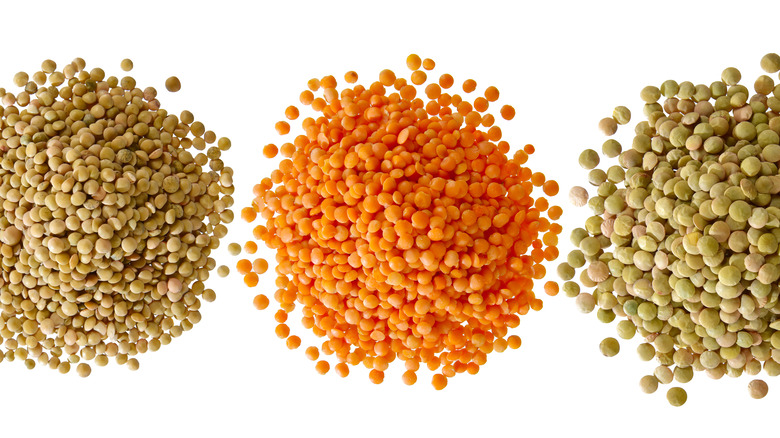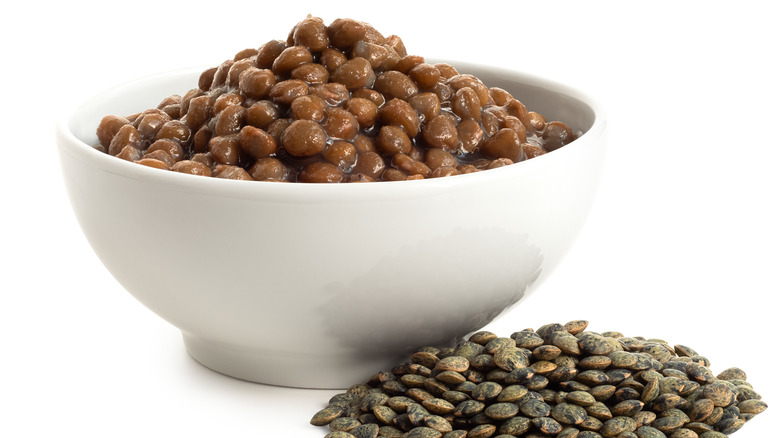What Makes French Lentils Different From The Other Types?
Trying to bring a new food or ingredient into your diet can sometimes be a tall task. One of the complicating factors is whenever multiple varieties of the same item exist. They might all seem replaceable, but chances are that each is actually very unique. If a recipe asks for a potato you can just use any potato, right? Wrong! Aren't all mushrooms created equally? Nope! Pasta shapes just come down to preference. False! Each variety of these foods is used in different dishes for a specific reason.
Lentils are another example of a simple ingredient whose many varieties complicate things, and it's easy to make a mistake when using them. Lentils are an ingredient that covers a wide variety of cuisines, regions, and cultures. With each one comes a variety of different types of lentils as well.
If you're trying to work more lentils into your diet then you will inevitably be confronted by brown, orange, and green varieties. While it may just sound like a difference in color, there are some subtle, and not-so-subtle differences between the varieties. Take the French or Puy Lentils, for example. These tiny legumes have a few key differences from other varieties that make them very perfect for certain dishes (via NPR).
French lentils have a peppery flavor, and durable texture
First, let's clarify what we're talking about. Lentilles du Puy, Puy lentils, or French lentils are all different names for the same variety essentially. According to The Kitchn, the only difference is that the term Puy or du Puy is a geographically specific name that means those lentils were grown in the Puy region of France as opposed to Canada or India where most of the world's lentils are grown. The Puy region has volcanic soil that will alter the flavor slightly, but for the most part, they are the same variety.
All French lentils are a variety of green lentils that are most commonly sought out for their durable nature, and complex flavor profile. Green lentils are already regarded as having a peppery bite to them, but these flavors are even more pronounced in French lentils (via Plant Based FAQs). They also have more earthy notes to them as well, per The Kitchn. Because they hold their shape and texture better than other lentils they are a great option for salads, or for when you want to keep your lentils from turning to mush in a soup. The last main difference is nutrition. Green lentils and French lentils are both great sources of plant-based nutrition, but French lentils have roughly twice as many calories, carbohydrates, and protein (via Plant Based FAQs).

